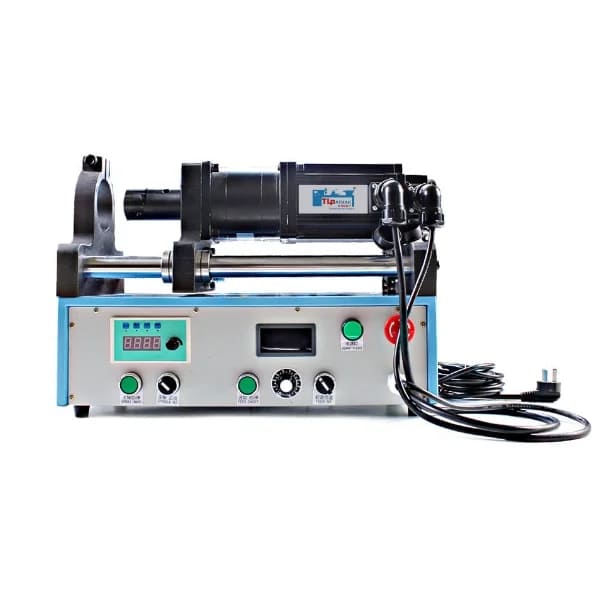The European Union has drawn a line in the sand for maritime emissions, and shipowners across the globe are scrambling to comply whilst protecting their bottom line. The introduction of the EU Emissions Trading System (ETS) for shipping and the upcoming FuelEU Maritime regulation have fundamentally changed the cost equation for vessel operations calling at European ports.
For shipowners, the challenge is twofold: reduce emissions to meet regulatory requirements whilst maintaining operational profitability in an increasingly competitive market. The solution lies in sophisticated monitoring systems that provide real-time insights into vessel performance, enabling data-driven decisions that achieve both environmental and financial objectives.
This post explores how vessel performance monitoring has become the cornerstone of successful compliance strategies, helping shipowners navigate new regulations whilst uncovering significant cost savings opportunities.
Understanding the New EU Regulatory Landscape
The European Union’s maritime emissions regulations represent the most significant environmental compliance challenge the shipping industry has faced in decades. These rules affect any vessel calling at EU ports, regardless of flag state or ownership nationality.
EU Emissions Trading System for Shipping
- Effective from January 2024
- Applies to ships over 5,000 gross tonnes
- Shipowners must purchase allowances for CO2 emissions, priced at approximately €80-100 per tonne
- For a vessel consuming 200 tonnes of fuel daily, this can mean an additional €50,000-65,000 per day in costs
- Scope:
- 100% of emissions for voyages within the EU
- 50% of emissions for international voyages to/from EU ports
- Substantial cost exposure for operators on major trade routes
FuelEU Maritime Regulation
- Starts in 2025
- Requires greenhouse gas intensity reductions for all vessels calling at EU ports
- Targets:
- 2% reduction by 2025
- Escalates to 80% by 2050
- Penalties for exceeding intensity limits: €2,400 per tonne of CO2 equivalent
- Unlike the ETS, compliance requires actual operational improvements or use of alternative fuels—not just purchasing allowances
- Drives the need for efficiency upgrades and investments in cleaner technology
The Financial Impact of Non-Compliance
The cost of non-compliance extends far beyond regulatory penalties. Port state control authorities are increasing their focus on emissions monitoring, and repeat violations can result in vessel detentions, commercial delays, and reputational damage that affects charter rates and insurance costs.
Consider a 14,000 TEU container vessel operating between Asia and Europe. Without optimisation, EU ETS costs alone could exceed €2 million annually. Add FuelEU Maritime penalties for non-compliance, and the financial exposure becomes prohibitive for many operators.
These regulations also create competitive disadvantages for inefficient vessels. Charterers increasingly factor compliance costs into their decision-making, favouring vessels with proven efficiency records and comprehensive monitoring systems.
How Vessel Performance Monitoring Transforms Operations
Vessel Performance Monitoring systems provide the real-time data and analytical capabilities needed to optimise fuel consumption, reduce emissions, and ensure regulatory compliance. These systems continuously collect, process, and analyse thousands of data points, offering insights that manual monitoring simply can’t provide.
Here’s how advanced monitoring systems make a difference:
- Real-Time Fuel Consumption Tracking
- Monitors fuel usage at granular levels—by system, operating condition, and voyage segment
- Identifies inefficiencies traditional methods may miss
- Example: Reveals when auxiliary engine consumption spikes during cargo ops, prompting targeted efficiency measures like shore power connection and optimised cargo handling
- Engine Performance Optimisation
- Continuously tracks critical engine parameters such as combustion efficiency, turbocharger performance, and fuel injection timing
- Uses machine learning algorithms to detect issues before they escalate
- Enables predictive maintenance, helping vessels maintain optimal efficiency and saving up to £400,000 in annual fuel costs for large ships
- Weather Routing and Speed Optimisation
- Integrates real-time weather and current data with vessel performance stats
- Recommends dynamic speed adjustments to balance fuel usage and schedules
- Can cut fuel consumption by 10–20% on many routes, reducing ETS costs and improving FuelEU Maritime compliance
Data-Driven Compliance Strategies
Effective compliance requires more than just monitoring current performance; it demands predictive capabilities that enable proactive management of emissions exposure and regulatory requirements.
Emissions Forecasting and Budget Planning
Advanced monitoring systems can forecast emissions for planned voyages based on historical performance data, weather predictions, and operational parameters. This capability enables accurate budgeting for ETS allowances and identification of voyages that might exceed FuelEU Maritime intensity limits.
Operators can use these forecasts to make informed decisions about route planning, cargo mix, and alternative fuel adoption. Early warning of potential compliance issues enables corrective action before violations occur.
Alternative Fuel Integration
As alternative fuels become more available, monitoring systems help evaluate their operational and financial impact. They can model the emissions benefits of different fuel options whilst accounting for price premiums, availability constraints, and technical compatibility issues.
This analytical capability is crucial for long-term planning, helping shipowners develop fuel transition strategies that meet regulatory requirements whilst minimising costs and operational disruption.
Technology Integration and Fleet-Wide Benefits
Modern Vessel Performance Monitoring systems integrate seamlessly with existing fleet management platforms, providing comprehensive insights across entire fleets rather than individual vessels.
Fleet Benchmarking and Best Practice Sharing
Fleet-wide monitoring enables performance benchmarking that identifies top-performing vessels and operational practices. Operators can analyse why certain vessels achieve superior efficiency and replicate these practices across their fleet.
This benchmarking often reveals significant performance variations between sister ships or vessels operating on similar routes. Addressing these variations through targeted improvements can yield substantial fleet-wide savings.
Crew Training and Performance Management
Monitoring systems provide objective data on how operational decisions affect fuel consumption and emissions. This information supports targeted crew training programmes that reinforce efficient operating practices and highlight the financial impact of operational choices.
Crews who understand the cost implications of their decisions typically demonstrate improved efficiency consciousness, leading to sustained performance improvements beyond what technology alone can achieve.
Measuring Return on Investment
The financial benefits of comprehensive performance monitoring typically far exceed the system costs. Leading monitoring platforms cost £50,000–150,000 annually per vessel, whilst the potential savings often reach millions of pounds for large vessels operating on EU routes.
Direct Cost Savings
- Rapid Payback: Fuel savings alone often justify monitoring system investments within 6–12 months.
- Fuel Efficiency Gains: A 5% improvement in fuel efficiency for a large container vessel can save £1–2 million annually at current fuel prices, even before factoring in emissions reductions.
- Additional Savings:
- Optimised maintenance schedules
- Reduced port expenses
- Improved cargo handling efficiency
These operational improvements accumulate over time, making technology investments increasingly attractive.
Compliance Cost Management
- Accurate Emissions Tracking: Enables precise ETS allowance purchasing—avoiding both over-purchasing and potential penalties from underestimating emissions.
- FuelEU Maritime Compliance: Identifies the most cost-effective improvement opportunities, including:
- Operational optimisation
- Alternative fuel adoption
- Efficiency upgrades
Implementation Best Practices
Successful monitoring implementation requires careful planning and stakeholder engagement to maximise benefits and ensure user adoption.
System Selection and Integration
Choose monitoring systems that integrate with existing fleet management platforms and provide open data interfaces for future expansion. Cloud-based solutions offer advantages for fleet-wide data sharing and analytics whilst reducing IT infrastructure requirements.
Consider systems that provide both real-time monitoring and historical analytics capabilities. Real-time data enables immediate optimisation decisions, whilst historical analysis supports long-term planning and performance improvement initiatives.
Training and Change Management
Comprehensive training programmes ensure that shore staff and crew members can effectively utilise monitoring capabilities. Focus training on practical applications rather than technical features, emphasising how monitoring data supports better decision-making.
Establish clear procedures for responding to monitoring alerts and performance recommendations. Regular performance reviews with crew members reinforce the importance of efficiency consciousness and provide opportunities for continuous improvement.
Future Developments and Opportunities
The regulatory landscape continues evolving, with additional emissions requirements likely in the coming years. Advanced monitoring systems position shipowners to adapt quickly to new regulations whilst maintaining operational efficiency.
Artificial Intelligence and Predictive Analytics
Next-generation monitoring systems incorporate artificial intelligence capabilities that identify complex patterns and optimisation opportunities beyond human analytical capabilities. These systems can predict optimal operating strategies based on multiple variables, including weather, cargo characteristics, and market conditions.
Machine learning algorithms continuously improve their recommendations based on actual performance results, creating increasingly sophisticated optimisation capabilities over time.
Integration with Port Systems
Emerging technologies enable integration between vessel monitoring systems and port management platforms, optimising arrival times, cargo handling procedures, and port energy consumption. These integrations can reduce emissions during port calls whilst improving operational efficiency.
Smart port initiatives increasingly require vessels to provide performance data in advance, making comprehensive monitoring systems essential for accessing preferred berthing slots and services.
Conclusion: Strategic Advantage Through Smart Monitoring
Vessel Performance Monitoring has evolved from a nice-to-have technology into an essential strategic tool for navigating EU emissions regulations whilst maintaining profitability. The combination of direct fuel savings, compliance cost management, and operational optimisation creates compelling business cases that extend far beyond regulatory requirements.
Shipowners who embrace comprehensive monitoring strategies position themselves for success in an increasingly regulated and competitive market. Those who delay implementation face mounting compliance costs and competitive disadvantages that become more difficult to overcome over time.
The technology exists today to achieve significant cost reductions whilst meeting the most stringent environmental requirements. The question for shipowners is not whether to implement advanced monitoring, but how quickly they can realise the substantial financial and operational benefits these systems provide.



